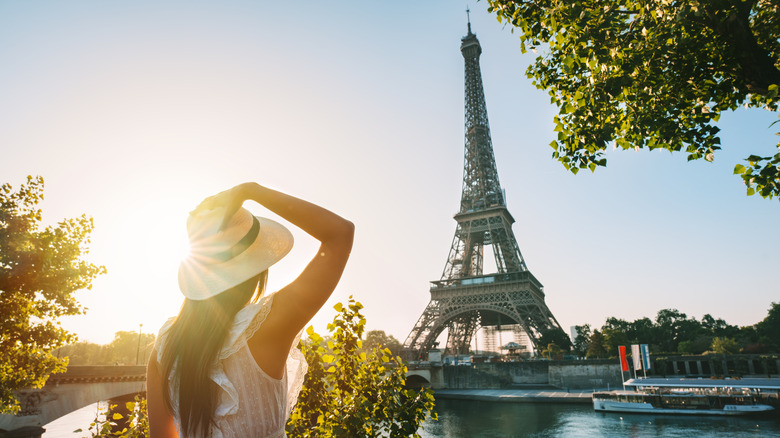Travel Guides
Daria Kulkova/Getty Images
Jared Woods
Never assume the locals will speak English
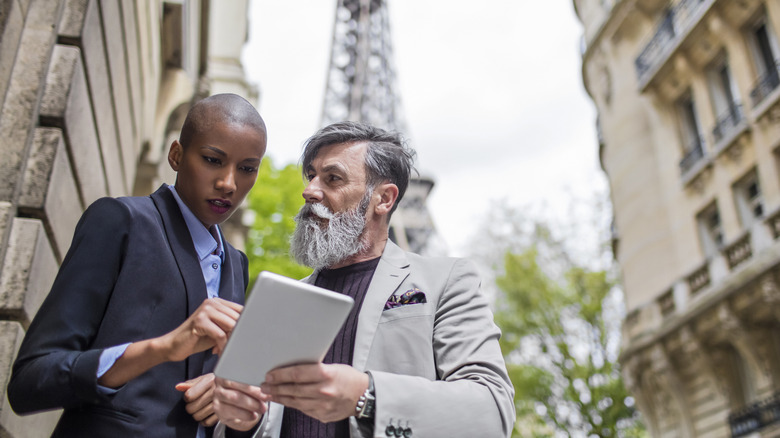
If you’re an English speaker, there’s good and bad news. The good news is that English is the most common second language in Paris, with 24% of the locals fluent in the dialect. However, the bad news is that the majority of Parisians will not appreciate you asking for help using your native tongue, and many will walk right past you without another glance.
The Parisian aversion to this language is unsurprising when you research the turbulent history between the French and the British. To add insult to injury, the excessive number of tourists swarming their city while expecting to converse outside of the French language is understandably frustrating. Hence, it’s better to learn a handful of phrases to get the conversation rolling respectfully, and the locals will often reward your efforts by responding in English anyway. As always, the Google Translate app can be your best travel friend, allowing you to quickly arm yourself with the necessary questions before you engage with a resident.
Don’t forget to pack your best clothes

This suggestion might sound silly until you step off the plane. That is because everyone in Paris seems to be clothed for the runway. The men, the women, and sometimes even the dogs will make you feel underdressed and inferior. Indeed, the city takes its reputation for style immensely seriously, proudly standing as one of the main four fashion capitals in the world, along with London, Milan, and New York City.
If you wish to fit in with the dauntingly high standard of the French capital, you’ll need to bring several of your most impressive outfits. However, you could also save that space in your bag to stock up on the latest threads while in the neighborhood. French brands Chanel, Dior, and Louis Vuitton are headquartered in the city, not to mention that any international fashion company worth a conversation will have a significantly sized store here. Just prepare your wallet for a shock, as products in Paris aren’t cheap! It’s no wonder the industry pulled €154 billion into the French economy in 2018 alone.
Don’t visit attractions without researching first
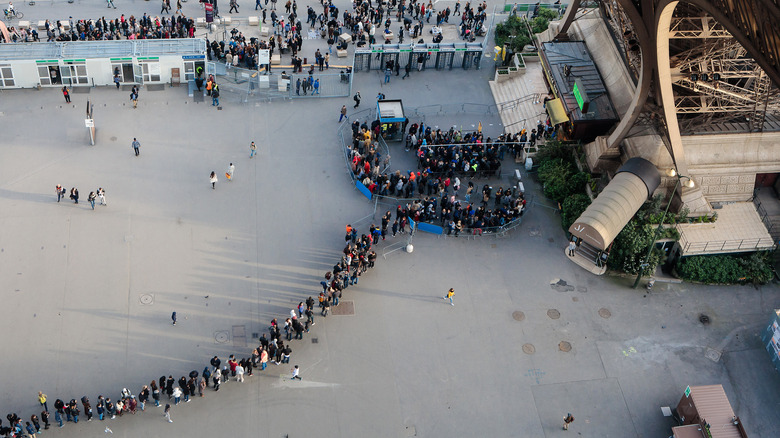
Birute/Getty Images
There are so many tourist hacks regarding the main attractions that you should always check every website before you go. For example, you may enter the Louvre for free if you’re under 18 or an EU citizen between 18 and 25. The museum also doesn’t charge on the first Friday of the month but is closed every Tuesday, so select your slots wisely!
When it comes to the Eiffel Tower, the queues to the top can take as long as 3.5 hours. To minimize your headache, pre-purchase your tickets online. This will allow you to bypass the crowds in front of the ticket office, but you should still arrive as early as possible, perhaps eating a croissant breakfast while you wait. Finally, be wary of third-party sites promising “skip-the-line” deals for the Eiffel Tower. These do not exist, whereas one must become a member of the Amis du Louvre if one wishes to stroll through those doors unhindered. Otherwise, be safe and purchase Eiffel Tower tickets or the entrance to the Louvre via official means only.
Don’t overhype the Mona Lisa (without educating yourself)
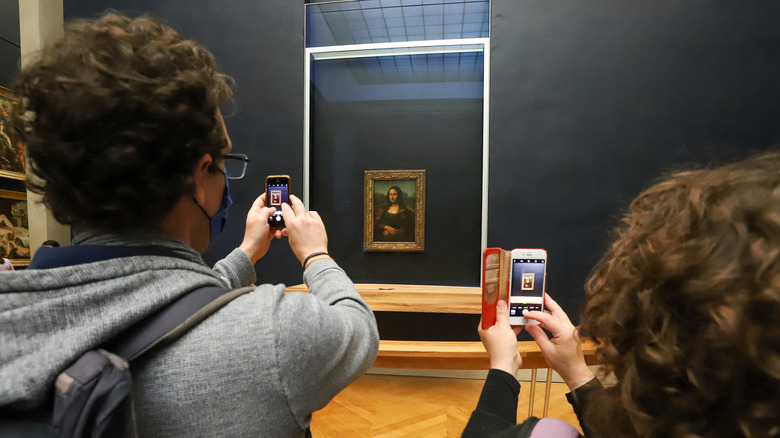
Marc Piasecki/Getty Images
Ask any tourist what was the most disappointing sight in Paris, and the majority will answer the Mona Lisa in the Louvre. For starters, it’s likely smaller than you imagine, sitting at 30 inches tall and 21 inches wide. To make matters even tinier, you may have to spend hours in a queue just to stand 15 feet away from it, the closest you can get. For these reasons, the “most famous painting in the world” hardly ever lives up to its reputation. However, if you do your homework before you go, the piece will explode with relevance, and you’ll understand why art scholars continue to drool over its perfection to this day.
To comprehensively list the genius of Leonardo da Vinci would take a book of content, but the Mona Lisa is considered his masterpiece due to several factors. The subject’s position was revolutionary, as standard portraits of the period were strictly angled as a profile. Her facial expression is said to change depending on where you focus. Its clever use of light and shadow outlines her bone structure beneath, a result of da Vinci’s experimental layering technique, which took him an estimated 16 years to complete. That is why it’s the highest insured piece on the planet, at $100 million. For a deeper, more mind-blowing analysis, watch this Mona Lisa: Great Art Explained video.
Don’t fall for the scams

Antonioguillem/Getty Images
Surrounding every popular attraction is a myriad of scams. Your strongest defense is to learn about the most common swindles, and then you’ll be better equipped to spot them coming. If someone attempts to place a free bracelet upon your wrist, do not allow them to do so, for they will ask for cash payment as soon as you accept their gift. If a group of smiley women requests your signature for a petition, do not sign it, as they will aggressively demand a donation a moment later. And while Paris is considered a safe city, pickpocketing is a frequent problem. As a rule, keep your valuables hidden, and if an over-friendly English-speaking person approaches you, simply walk away.
The aforementioned scams are illegal, but there are legal ways that naive tourists are conned out of their money, too. Perhaps the worst is the restaurants near the city’s main sights, which will shamelessly charge you many times the price of a café around the corner. What’s more, the food at the smaller eateries is often tastier, so take some extra steps and compare the menus before sitting down. There are plenty of other hacks to save on meals in Paris, so as always, search around the web first.
Don’t ignore the lesser-known sights

Frédéric Soltan/Getty Images
If you’re only in the French capital for a short time, it is understandable that you’ll want to see the most famous sights. And you absolutely should, as they are world-renowned for good reason. The Eiffel Tower, the Arc de Triomphe, the Sacré-Coeur Basilica, the Notre-Dame Cathedral, and The Louvre are essential to the Paris experience, and you will regret skipping any of them.
However, there is a wealth of lesser-known Paris places that aren’t overrun with tourists, so if you have extra hours to spare, use them to dig deeper past the beaten traveler’s path. The 6 million skeletons in the Catacombes de Paris are a chilling scene you’ll never forget. The art squat at 59 Rivoli offers a glimpse into the underbelly of Paris’ creative culture. The Wall of Love will teach you how to say “I Love You” in 250 languages. And, perhaps most disorientating of all, the city has its very own Statue of Liberty.
Don’t attach a lovelock to a bridge
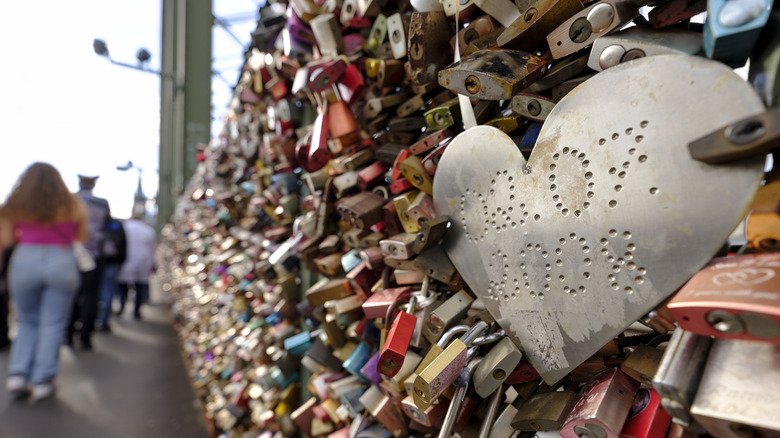
Thierry Monasse/Getty Images
Paris will always be close to the top of any “City of Love” list. This reputation has been drilled into us thanks to the fantasy of cinema, where classics such as “Amélie,” “Before Sunset,” and “Love in the Afternoon” weave around the capital, interlacing magic into the landmarks as they go. Consequently, Paris is considered an iconic honeymoon destination where lovers come to declare their love in this movie-esque setting. And what better way to represent this bond than to secure an engraved padlock onto a bridge?
Unfortunately, this popular tradition proved disastrous in 2014. The Pont des Arts was Paris’ most famous lovelock bridge, but due to the 45-ton combined weight of over a million locks, a section collapsed. Ultimately, the council was forced to remove the locks, and soon after, the railings were replaced by glass panels. It is now illegal to partake in the practice, so skip this activity unless you want to get arrested on your romantic getaway.
Don’t shop at the Champs-Élysées
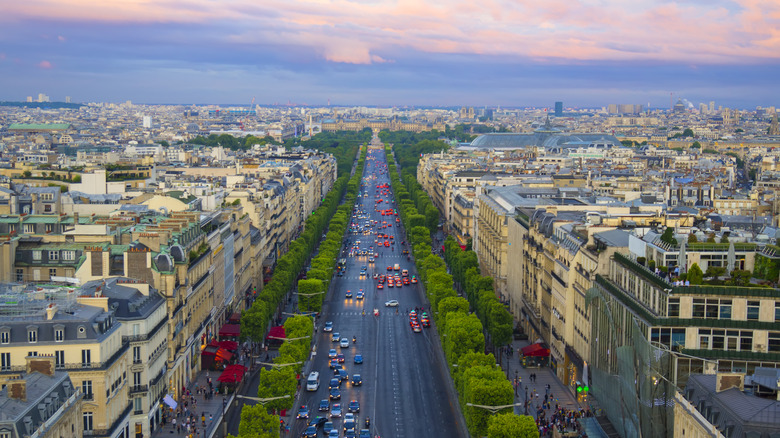
Kryssia Campos/Getty Images
The Champs-Élysées Avenue is another one of the unmissable locations of this city. Its picturesque layout provides the ideal backdrop for that boastful Parisian selfie. On the western end, you’ll find the Arc de Triomphe, an iconic monument dedicated to those who fought in the French Revolutionary and Napoleonic Wars. However, this street is also famous for its rows of luxury fashion brand stores from which you should never purchase anything.
The reason to avoid Champs-Élysées shopping is that the items here are ridiculously overpriced, and a brief retail therapy spree could obliterate an average person’s entire holiday budget. So, if you fall into temptation, remind yourself that these garments are not Champs-Élysées exclusives! You can find identical pieces for a fraction of the cost elsewhere, probably even in your hometown. The price tags are so exorbitant that most Parisians would not buy their clothing from this street.
Don’t visit during the high season
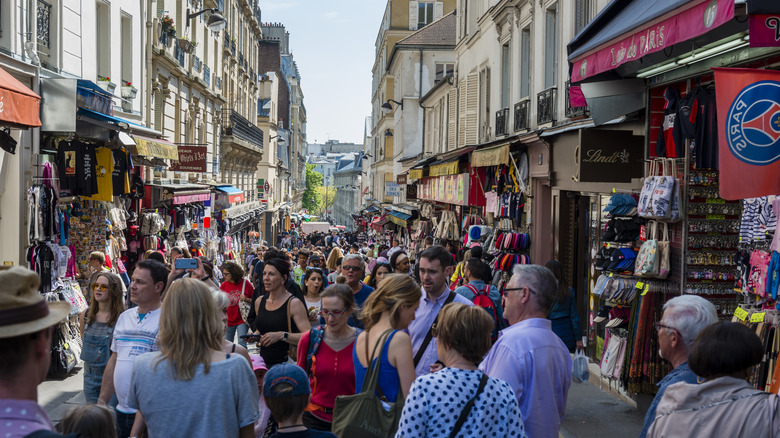
No_limit_pictures/Getty Images
The summer weather of June to August warms Paris to life, and naturally, this inviting climate gives everyone the same idea, and the city is quickly overwhelmed by tourism. The queues grow longer, and the prices jump to such heights that the locals frequently escape during this time. But if you’re a sucker for pain, there is no date more overbearing than when the Tour de France bicycle race concludes in July. Up to 12 million people cheer the cyclists from the sidelines, with many crowding around the finish line in this city. That said, Paris’ upcoming Summer Olympics leaves no space for the competition in 2024, and for the first time ever, those bikes will aim for Place Masséna in Nice instead.
For those who prefer to explore Paris with extra elbow room, try either March to May or September to October. These months are not only calmer but also hang onto some days of warmth. Alternatively, December to January might be the coldest season, but it is perfect for a magical Christmas flavor on a more forgiving budget.
Don’t book at the last minute
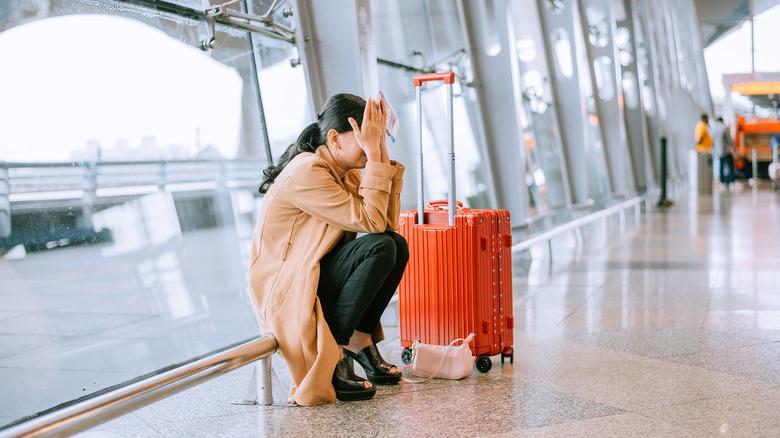
Kschong/Getty Images
Some people get lucky, but generally speaking, any last-minute decision-making in Paris will cost you big bucks. You are looking at one of the most popular holiday destinations on the planet, so if you don’t prepare your trip in advance, the consequences may sting you harder than you can handle. Whether posh hotels or squashed hostels, accommodation in every budget bracket gets snapped up quickly; hence, booking your room at least four to six months before you go is advised.
The identical approach applies to the main attractions. Many disappointed tourists have attempted to book their Eiffel Tower elevator tickets after they land, only to find they’re already sold out. Such an oversight can break the romantic Parisian dream you’ve designed in your head, so be smart. Compile an itinerary of your essential viewing, and treat it with the same urgency as you would your flight.
Never rely on taxis
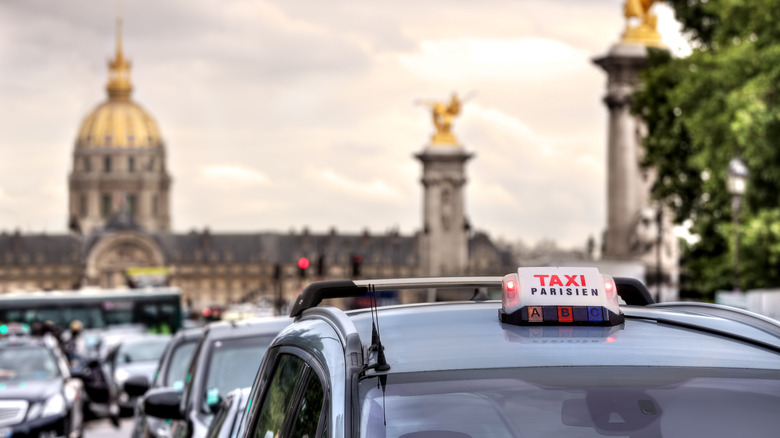
Rglinsky/Getty Images
Travelers often note that Parisian taxis can be a painful ordeal. The traffic is a crawling disaster during the day, and at night, these services are difficult to find. Moreover, if a driver senses you are a tourist, many will have no moral objection to overcharging you. Renting a car may appear as the superior option, but the same concerns still apply: They’re expensive and not the most enjoyable form of transport.
Granted, ride-hailing apps are far more reliable, albeit overpriced, compared to the rest of the world. However, you are better off using the Metro. It’s affordable, relatively fast, and is part of the overall Paris experience. But if you genuinely want to get to know the city for what it can offer, then strap on your most comfortable shoes and commit to the distance on foot. Paris may be a large metropolitan, but much of it is surprisingly walkable.
Don’t throw away your Paris Métro ticket
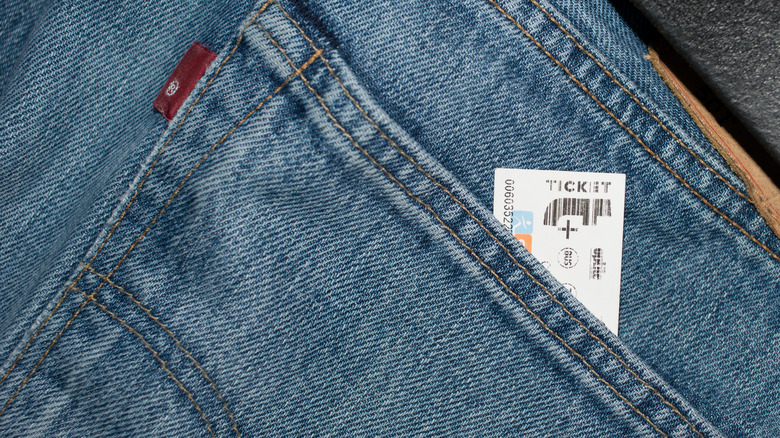
Thibault_a/Getty Images
Once safely through the Metro barrier, you may be tempted to discard your ticket. However, this seemingly small decision can result in a fine many times more expensive than you initially paid. The Metro police reserve the right to demand proof of purchase at any point during your ride, and you often need that card to exit on the other side. Accordingly, think twice before throwing out your Paris metro ticket until you leave your final stop’s station. Thankfully, the Metro is gradually phasing out the coupon-style tickets, which will be replaced with travel cards and apps by the end of 2025. This means less chance of costly accidents!
Speaking of costly, not all tickets are created equal and come in different classes. It is worth your attention to research which purchases best suit your vacation timeframe. For example, if you’re more of a walker and will only use the train system on the odd occasion, then single-journey tickets are ideal for you. However, if you’re hopping on and off the Metro to cover as much distance as possible, consider getting a pass. Using this card, one can travel as often as they like within a chosen period at a flat price. Check out their website for an updated list of Paris Métro ticket options.
Don’t stay too far from a metro

Franckreporter/Getty Images
A common mistake many first-time visitors make is failing to research how close their accommodation is to a metro station or, even worse, staying on the city’s outskirts to save money. Don’t forget that Paris is packed with sights to see and things to do. You will end your days exhausted and curse your decision when you have to add extra miles to your journey just to get home.
In 1795, the capital was split into 12 districts, known as arrondissements. Now there are 20. By checking the Paris map, you will note that they start in the center and spiral clockwise outward. If you’re on a mission to see the main attractions, it is best to stick around the one through to nine arrondissements. The most famous landmarks sit within these regions and are a reasonable walking distance from one another. That said, the 18th Arrondissement is Montmartre, a budget-friendly fan favorite, where you can visit the spectacular Sacre Coeur Basilica. It is also well connected with its metro line, so you won’t have a problem ticking everything off your list.
Don’t expect unadulterated beauty
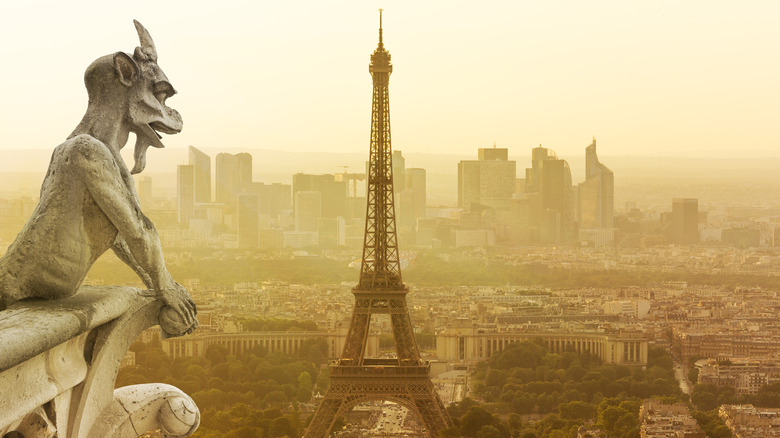
Grafissimo/Getty Images
Perhaps the most curious (and hilarious) Parisian-related phenomenon is known as “Paris syndrome.” It is defined as an extreme variation of culture shock, whereby the city does not live up to romantic expectations, and visitors are overcome by disappointment. The consequences of such a monumental letdown have been reported to manifest physically, with symptoms including an increased heart rate, nausea, vomiting, and even hallucinations.
Interestingly enough, the syndrome more commonly affects Japanese travelers. Experts hypothesize this is due to the vast differences between these two societies. Those living in Japan are accustomed to litter-free streets and reserved, polite people. As anyone who’s been to Paris will tell you, these factors are its strongest points. A 2020 survey by Ceoworld placed Paris as the rudest city in Europe, while TikTok users are exposing the dirtier side of the French capital. Regardless, with over 1 million Japanese tourists a year, the number of cases is minimal, with less than 70 patients since 1988.

